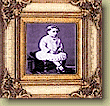Teacher Activity Links:

The Gold Panning Activity
Find out about the technique of placer mining used during the gold rush period and implement a great hands-on activity for your students!
Objective:
To experience the hardships involved with placer mining techniques; one such technique is gold panning. After the outdoors experience, have the class reflect on various Prescribed Learning Outcomes (listed below.)
Prescribed Learning Outcomes:
BC Grade 5 Social Studies Curriculum: Economy and Technology:
It is expected that students will:
- analyze the relationship between the development of communities and their available natural resources
- explain how supply and demand are affected by population and the availability of resources
- analyze factors that influence use and development of transportation and communication systems in different regions of Canada
- analyze the impact of modern technology on lifestyle and work
- analyze how people are influenced by and influence mass media messages
- natural resources have influenced and been influenced by development of communities, transportation, and communications. Using a variety of sources, students begin to understand how technology affects economies and lifestyles.
-
BC Grade 10 Social Studies IRP: Economy and Technology: (Canada from 1815 to 1914) It is expected that students will:
- identify factors that contribute to the economy of British Columbia
Group Size: Pairs or small groups of 3 or 4
Pre-Procedure & Materials:
- The five days prior to the event: use a non-water-soluble gold paint and paint very dense materials such as small pieces of lead to resemble gold nuggets.
- Four days prior to event: obtain a large amount of string. Objects you should take with you include a first aid kit, camera, and a gold pan (any type of metal or foil pie plate), writing utensil, clipboard, and tissues. Also a bag of treats (jelly beans, hard wrapped candies, etc.,) for all to enjoy after the expedition. Putting all these items in an easily accesible back pack will keep your arms free.
Spend some time developing a list of equipment with students that they will need when prospecting. Students will need a gold pan, four stakes or tent pegs (if not available use any other fairly sturdy straight object), a bag lunch and water bottle if required, sunscreen if hot. - Day previous: Get students to bring in their packs with required supplies. At this point they should have their 'stakes' tied together with the string and each section of string should be no greater than one meter length. Get them to wrap the string and stakes neatly together to be placed in their packs. You (the teacher) plant the 'nuggets' at your chosen location either just below the water level or at the water level along the river bank. You'll also need to make a bird's eye map of the area so you can record where each claim is staked and who is in the claim.
Procedure
- Day of trip: Check everyone has their supplies.
- Reach location. Basic instructions include;
- method of panning (to be demonstrated by the teacher see below)
- boundary of gold panning area
- allowable size of staked area
- general area where nuggets 'may' be found along stream bank
- Once each claim has been made, have claimant tell you where they have staked their claim. Place this location on your bird's eye map. Students must remain inside their claim and pan only inside their claim. Once panning is under way take lots of photos.
- Once panning is complete count up each persons nuggets to determine who panned the most. (Find any missing nuggets at this time.)
Conclusion
- Lead a discussion to question the method used by the students who panned effectively. Was it different than their methods? Were they using a grid pattern across their claim? Were they going deeper?
- Have students research other methods of placer mining and create small scale models.
- Bulletin Board: Post all photos taken at the gold panning event with a brief write up explaining what is going on, for parents, teachers and other classes to see.
How to pan for gold:
- Fill your pan half full of gravel from the stream bed/bank.
- Using water from the stream, dip your pan into the river bringing the water level over the layer of rock.
- Holding your pan on either side, swirl the water in the pan by moving your arms in circular motions. The water should spill over the sides of the pan taking with it fine particles of mud and sand.
- As you start to lose your water replenish it from the stream. You can pick out the larger particles of rock or simply tip your pan while swirling so they will fall out of the pan. make sure not to dump your entire pan otherwise you will lose all your potential nuggets!
- Repeat 3 and 4 until you have only glittering pieces of gold left in your pan. If nothing is left in your pan you may have swirled your water a little too much, or tilted you pan too much, or been panning in an area without any gold, so move on!
Home | Contents | Tour | People | Collection | Transportation | Just For Kids! | Team
| Last updated 31 August 1998. This digital collection was produced under contract to Canada's Digital Collections Program, Industry Canada. Produced by Canada's Digital Collections Team. Content provided by BC Heritage Branch, Province of British Columbia. |
 |
